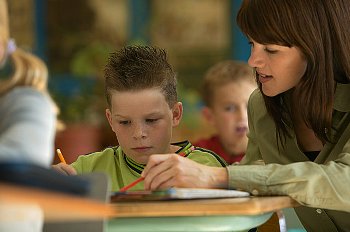Home » STEM
Category Archives: STEM
Maker Movement in Classrooms?
First, I’d like to thank My School of Thought for posting such an excellent article on The Maker Movement. As a tutor and “maker” myself, I couldn’t be more thrilled by the take-off of this movement and am very hopeful for the future of our classrooms knowing that more and more teachers are beginning to incorporate more opportunities for students to build, explore, and engage with the materials they’re learning in new ways.
Just take Allen High School’s Blu Bistro, for example. When I was a student of AHS (I can’t believe how many years ago now that was!), cooking classes were basically nonexistent, but were in the works as a possible future extracurricular option for students. And now? Now AHS’ student chefs are not only serving restaurant-quality food of their own making to Allen community residents, but they’re also competing in kitchens across the state of Texas (in both cooking and restaurant management) including in the 2013 Texas Pro-Start Invitational state finals wherein dishes were judged by “members of the Texas Restaurant Association and chefs from culinary schools such as Le Cordon Bleu and The Culinary Institute of America” (Wendy Gragg, Waco Trib). These students are learning to be Makers of a different kind than the Engineering students we’ve started hearing so much about, but they’re Makers just the same. It’s in the art of being a producer that students can often start finding new interests and motivations for themselves to learn and become more active consumers.
As Dale Dougherty, editor of Make Magazine, explains in My School of Thought’s post, “…I want people to see themselves as producers, not just consumers. I’d like to see it become a capability that we use in home life and at work and that we’re proud of it, where we see ourselves as having these powers to do stuff.” I couldn’t agree more. Being a consumer, while fun, challenging, and interesting in its own right, is often today conflated with being more passive whereas being a producer seems to naturally mean being more active and invested in the product itself. But this does not always have to be the case. Rather, by encouraging children and friends to be more active producers, we can help them and ourselves become more active consumers as well.
We often see this in English courses where some students can have trouble getting interested in assigned readings yet leap at the opportunity presented by a creative writing project. Why is this? It isn’t because students are inherently lazy or come out of the womb not enjoying to read or don’t understand the connection between writing and reading — loving reading, loving science, loving learning (loving being a consumer of knowledge) are all things that must be taught and demonstrated for children from an early age. How can you be a creative writer without also learning to love and actively engage in the process of reading — in the process of consuming written materials? How can you be a builder without also learning to love and actively consume the necessary mathematics and scientific principles?
The answer is simply that you cannot — but you can sometimes begin as a producer and so work your way into becoming a more active consumer.
These two identities, these two ways of learning — producing and consuming — feed into each other in a natural cycle. So who’s to say that you need to have one first before the other can follow? Why not let kids try their hand at building or writing or cooking something before they’ve learned all the elemental pieces? — It might just be the kick-in-the-pants they need to start asking questions, to realize what might be out there for them to learn from the cookbooks, mathematicians, and libraries. And the best part is, if the students are the ones asking and seeking answers to their own questions, then they’re also learning to consume knowledge within a useful context and in a more active manner; they’re learning to consume and apply knowledge for a purpose, rather than simply memorizing facts because a school or standardized test demanded it (which can often lead to those facts seeming disjointed and useless). Learning information for a purpose or as part of a larger narrative of questions and exploration can often be key to that information being retained and applied in new ways. Our children learn from us — their mentors, parents, and teachers — what it means to have fun in one’s leisure time. If we spend all of our leisure time watching TV, then that’s what they, our children, will associate with down-time rather than more active and mind-engaging activities like reading, building, writing, or exploring.
And this is why we can’t leave the Maker Movement up solely to our schools and teachers. If we want our children to be more enthusiastic creators and more active consumers, then we must model this behavior for them and become more active and interested ourselves. This can be as simple as swapping out a night of television for a night of reading or puzzle-piecing or fort-building or creative writing or cooking or gardening or scavenger-hunting.
It can be as easy as learning to have fun with each other again.


